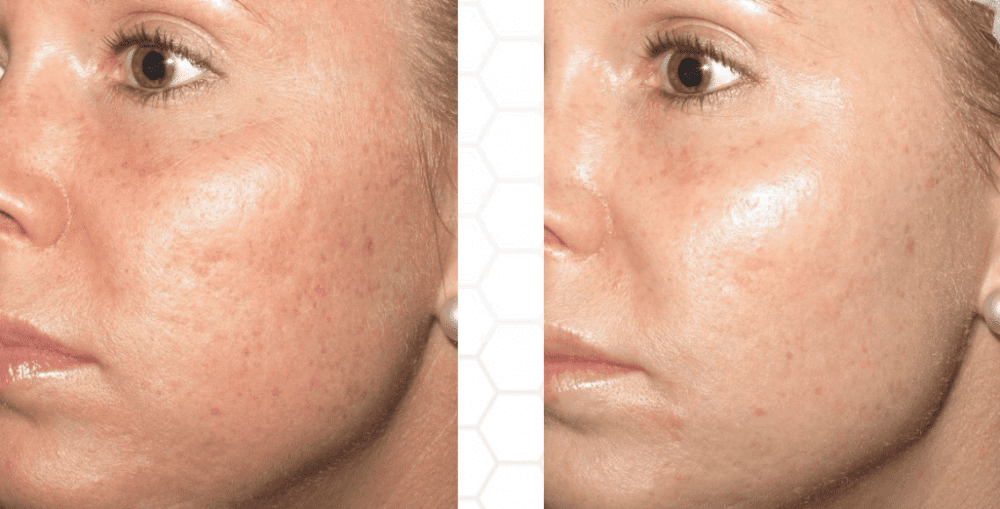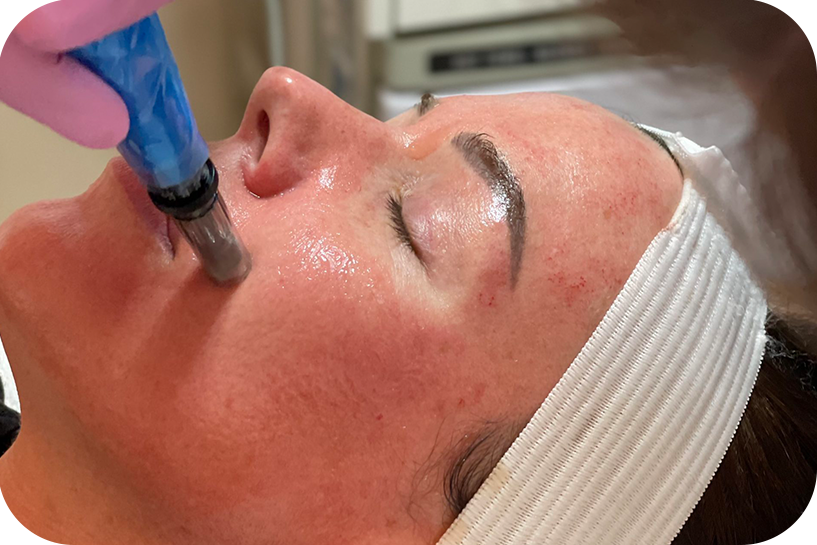Microneedling
Microneedling
Microneedling (MN) is a novel therapeutic modality in dermatology. Through physical trauma from needle penetration, MN induces a wound healing cascade with minimal damage to the epidermis. This allows for enhancement in the absorption of mainstay topical therapies across the thick stratum corneum. MN has become increasingly utilized over the last several years as it is a relatively simple procedure that is cost-effective, well tolerated, and offers both cosmetic and therapeutic benefits.
The ability to treat localized areas of disease has led to numerous studies gauging its potential in focal diseases of inflammation, dyschromia, and photodamage. This review discusses the principles and evidence behind the expanding applications of MN. It has shown promising results as an adjuvant therapy for enhanced drug delivery in the treatment of atrophic scars, alopecia, actinic keratoses, and disorders of pigmentation such as melasma.


Introduction
Microneedling (MN), also known as collagen induction therapy, is a process involving repetitive puncturing of the skin with sterilized microneedles. Its original conception can be traced back to 1995, when Orentreich and Orentreich developed the concept of “subcision”, or using hypodermic needles to induce wound healing in depressed cutaneous scars.
MN offers a relatively low cost and minimally invasive tool for the treatment of multiple cosmetic and dermatologic conditions.3 The basis of MN relies on physical trauma. It has been proposed that the trauma generated by needle penetration in the skin induces regeneration of the dermis
Methods
The studies selected for this review were gathered by searching the PubMed, MEDLINE, Cochrane databases, and electronic journals of dermatology. The search terms used for this review included “microneedling”, “collagen induction”, “reviews”, and “trials”. Only articles published in English were considered for inclusion in this review.
Articles were obtained in all circumstances and references were checked for additional information when considered applicable. Available studies involving human subjects were included in the review. Additionally, only studies regarding manual MN techniques were considered for inclusion.

Make an Appointment
Book your appointment today for a personalized consultation. Whether you're interested in PRP treatment or other hair restoration solutions, our expert team is here to guide you through the process. Let's discuss how we can help you achieve your desired results.
Frequently Asked Questions
Hair restoration and PRP therapy can raise many common concerns among our clients. Below, we’ve compiled answers to frequently asked questions to help you better understand the PRP hair treatment process, its benefits, and what to expect during your journey to healthier hair. If you have any additional questions, feel free to contact our specialists.
-
What is PRP hair
treatment and how does it work?
PRP (Platelet-Rich Plasma) therapy involves drawing a small amount of your blood, processing it to extract the platelet-rich plasma, and injecting it into your scalp. The platelets release growth factors that stimulate hair follicles, promoting natural hair growth and improving hair thickness.
-
How
long does it take to see results from PRP hair treatment?
Most patients begin to see noticeable improvements within 3-6 months after starting PRP therapy. However, the timeline can vary based on individual hair growth cycles and the severity of hair thinning.
-
Is
PRP treatment painful?
The procedure involves minor discomfort since it uses small injections into the scalp. Most patients find the pain tolerable, and a numbing cream is often applied beforehand to minimize any discomfort.
-
How
many PRP sessions will I need?
Typically, a series of 3-4 sessions spaced 4-6 weeks apart is recommended to achieve optimal results. After the initial treatments, maintenance sessions every 6-12 months may be suggested to sustain hair growth.
-
Are
there any side effects of PRP hair treatment?
PRP treatment uses your own blood, so the risk of adverse reactions is minimal. Some mild swelling, redness, or tenderness at the injection site may occur but typically resolves within a few days.





